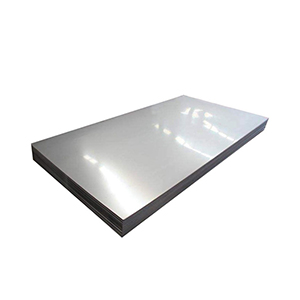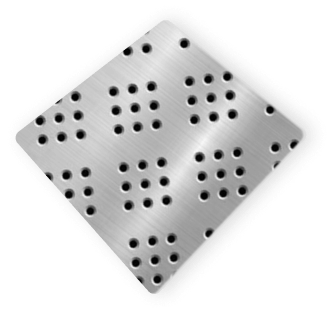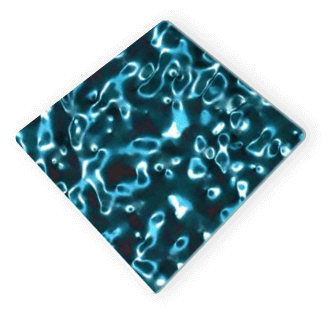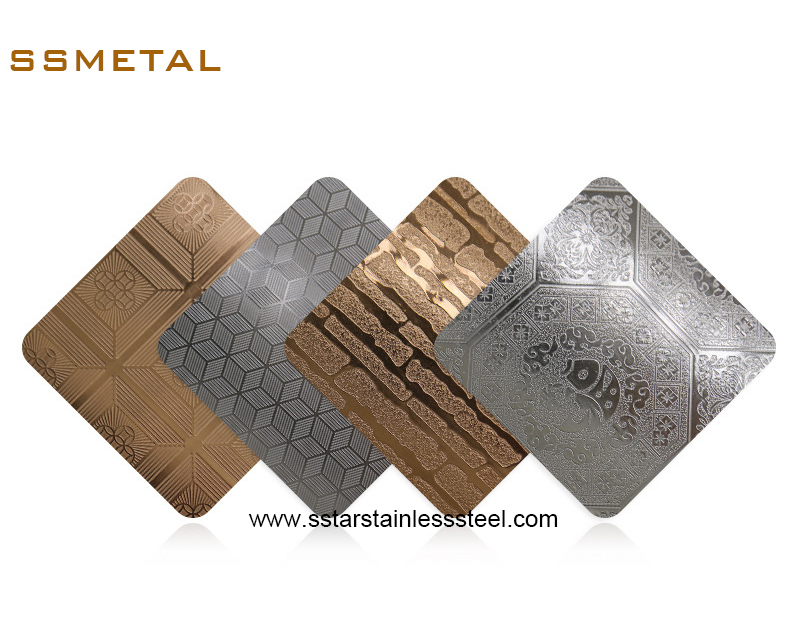In our daily life, many products are made of stainless steel, such as thermos flasks, kettles, pots, and plates, which can be seen everywhere. Stainless steel products have basically become indispensable. Acero inoxidable, one of the most common metals used in a variety of industries, is versatile in many areas, like food processing, architectural ornament, medical industries, and chemical industries. For many manufacturers, it is a perfect metal material for their products because of its malleable nature y strong corrosion resistance. Now let’s uncover the secret of its rust-free property.
Will Stainless Steel Rust?
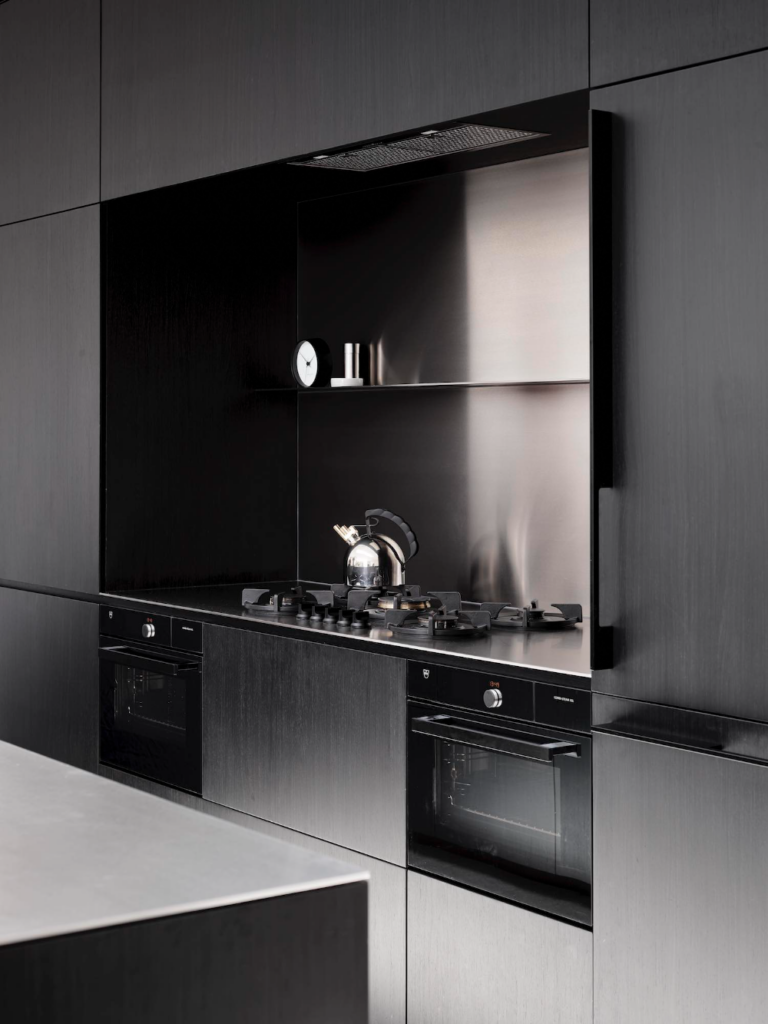
Fuente: Pinterest
Although renowned for its exceptional corrosion resistance, stainless steel will rust under some specific conditions. Like most metals, stainless steel rust under long-time exposure to water. Except for that, it will also rust when it is exposed to harsh chemicals, grease, sal, or heat, mostly in harsh industrial environments.
The corrosion resistance of stainless steel owes much to its constituent elements and rust-resistant coatings.
First of all, acero inoxidable is a ferrous alloy composed of two or more natural raw ingredients such as carbon, cromo, iron ore, nitrogen, silicon, níquel, y manganeso. These elements are added to improve its ductility, malleability, resistencia a la corrosión, and other qualities.
Chromium is the component that gives stainless steel resistance to corrosion and rust. It quickly reacts with the oxygen to form a thin oxide layer on the stainless steel’s surface, acting as a shield. Chromium oxide is a passive film that can prevent the alloy away from water and air. En general, chromium makes up 10 a 20 percent of stainless steel.
Otherwise, once the top layer of stainless steel is scratched off, a new layer of chromium oxide cannot form due to the lack of chromium. The more chromium it contains, the more rust-resistant the steel will be. Por lo tanto, you need a professional proveedor de acero inoxidable to provide the ideal material that suits you best.
Most of the time, stainless steel can be coated with a polyurethane top coat, sealing material, or epoxy coating to retard corrosion. These coverings are dependable and cost-effective options for carbon steel and stainless materials to prevent rust. Además, a majority of hardware, automotor, or department stores sell corrosion inhibitor sprays which are excellent for preventative maintenance.
Why Does Stainless Steel Get Rust & Corrosión?

Fuente: pixabay
There are usually six typical types of corrosion in stainless steel, namely general, galvanic, intergranular, pitting, crevice, and stress corrosion cracking. Stainless steel can start to rust for a variety of reasons. Nevertheless, what can cause one stainless steel alloy to corrode might not have an impact on another due to their distinctive composition. Here are five main factors that can corrode stainless steel.
1. Unclean Surfaces
Specific cleansers need to be used for the cleaning of stainless steel or else stainless steel will be exposed to dirt or other chemicals.
Rust will develop on a surface if the dirt is not removed or the surface is not fully rinsed and dried after cleaning. Iron is a mineral that is present in most water and reacts with oxygen in the air to form rust. Stainless steel metal will corrode over time if exposed to corrosive chemicals without being properly cleaned.
Whatever grade it is, no stainless steel is immune to corrosive chemicals for a long time. Por lo tanto, it is important to frequently clean bare stainless, especially after exposure to corrosive chemicals.
2. Improper Cleaning
Improper cleaning will cause corrosion of stainless steel. When the surface of stainless steel is scrubbed with steel wool or wire brush, the microscopic steel particles on the surface of the stainless steel may cause the surface to fall below the chromium concentration level of 12% which is a crucial index for stainless steel.
If the stainless steel starts to rust in this way, you should clean the rust off and completely clean the surface with a solvent to get rid of any remaining steel particles, which can stop further oxidation.
3. Strong Chlorides can Cause Pitting Corrosion
When exposed to settings that contain lots of chlorides, various kinds of stainless steel alloys will experience intense pitting corrosion. Salt is the most common chloride. Por ejemplo, stainless steel used in the construction materials for the navy may pit because of the prolonged exposure to seawater or sea breezes, which are rich in salt.
There are two methods to avoid pitting corrosion. On the one hand, you can choose a specific coating for the steel to avoid the corrosion of chlorides. Por otro lado, you can choose a grade of stainless steel that is particularly resistant to chlorides like grade 316 acero inoxidable.
4. Bimetallic/galvanic Corrosion from Welding Dissimilar Stainless Steel Alloys

Fuente: Pinterest
Some manufacturers might, whether on purpose or by accident, fuse two different metals together when they produce a customized steel wire or sheet metal form. Then there will generate an electrical current flow when two metals with distinct characteristics are linked by a common electrolytic substance (like water or weld filler material). As a result, the metal that accepts new electrons more readily will turn into an “anode” and begin to corrode more quickly. It is worth noting that the weld filler that is distinct from the metal will cause galvanic corrosion at the joint.
Factors that will affect the speed of the corrosion include types of welding filler, types of stainless steel, ambient temperature and humidity, and the surface area of contact between two metals.
One method is to add a coating to two metals to seal them off and stop the flow of electrons from the cathode to the anode. The best solution for bimetallic or galvanic corrosion is to never permanently connect two different metals together first.
5. Extreme Temperature
Melting temperatures of stainless steel alloys often reach far above 1,200 grados Fahrenheit. High temperatures do not make the metal melt, but they may cause other changes that impair the metal’s resistance to corrosion.
For instance, when stainless steel alloys are exposed to extremely high temperatures in many annealing procedures or heat treatments, scales form on hot metal. Their composition is different from the base metal, so their flaky leftover will cause bimetallic corrosion. Además, stainless steel will temporarily lose its shielding oxide formed by chromium as a result of high temperature. The possibility of corrosion will increase prior to the oxide layer forming again.
En conclusión, check the acceptable operating temperatures for any given stainless steel to check if the temperature utilized in your production processes surpasses those limits. Otherwise, you will confront other problems such as scaling or faded oxide layer.
How to Maintain Stainless Steel?

Fuente: pixabay
Throughout the stainless steel life cycle, attention should be paid to measures to prevent corrosion of stainless steel, como extending the performance and appearance of metals in design, production, and routine maintenance.
1. Diseño
Adopting stainless steel design is rewarded in the long run, but you have to pay attention to some points. Water penetration and the possibility of surface damage will be minimized in stainless steel applications with careful consideration during the design stage. When possible, employ drainage holes for water, and keep the number of crevices and cavities to a minimum. The design should promote open air circulation throughout the product since airflow is essential.
Outdoor facilities are frequently subject to weathering and physical damage. Thus, the content of the chromium should be thought ahead to avoid corrosion when stainless steel needs to expose to severe environments, especially for stainless steel pipe suppliers because the pipes are hard to clean.
2. Fabrication
Avoiding the interaction of stainless steel with iron or regular steel is crucial during the fabrication process. This calls for vigilant observation of the immediate environment, which includes storage containers, steel turning rollers, workbenches, equipment, and chains. During the manufacturing stage, any carbon steel dust that falls on the stainless steel surface may contaminate the steel and increase the likelihood of corrosion. Además, stainless steel must be preserved away from cleaning and grinding equipment that has been used with carbon or low alloy steel.
3. Maintenance
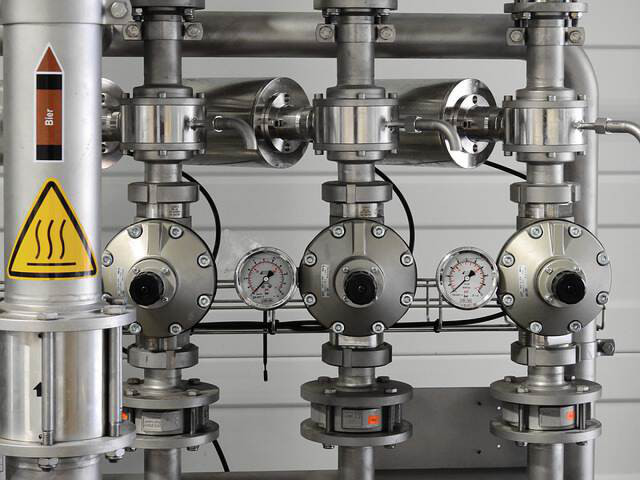
Fuente: pixabay
Frequent maintenance is critical in preventing rust on stainless steel and in slowing the spread of already present corrosion. The dirt that appeared on the stainless steel needs to be removed with warm water and soap while any rust that has developed must be removed mechanically or chemically. After the stainless steel got cleaned, a rust-resistant coating should be applied to avoid corrosion.
4. Cleaning Method
Stainless steel can self-heal because of the chromium oxide layer, but maintenance is still necessary. You can use warm water and a light soap or detergent for general cleaning. The procedure is to clean the surface, rinse it with fresh water, and dry it fully. If you want further maintenance, buy a specific cleaning kit or refurbish the products.
5. Coating
Powder coating on the surface of stainless steel is the best approach to stop stainless steel from rusting. Using electrostatic charges, a dry colored powder can be coated onto the stainless steel in a process known as powder coating. The powder coating is hardened to a finish when heated, completely covering the exposed stainless steel with a durable layer.
Key Takeaway
People make extensive use of stainless steel in many areas due to its properties of malleability and corrosion resistance. Usually it contains a certain amount of chromium and gets coated to avoid corrosion. Sin embargo, its unique features do not mean it is immune to rust or corrosion. When it is under extreme environments, such as strong chlorides, welding of two dissimilar metals, unclean surfaces, improper cleaning, and extreme temperature, it will get rust and corrosion. To preserve stainless steel better, you need to notice the process of design, fabrication, daily maintenance, cleaning, y coating.






